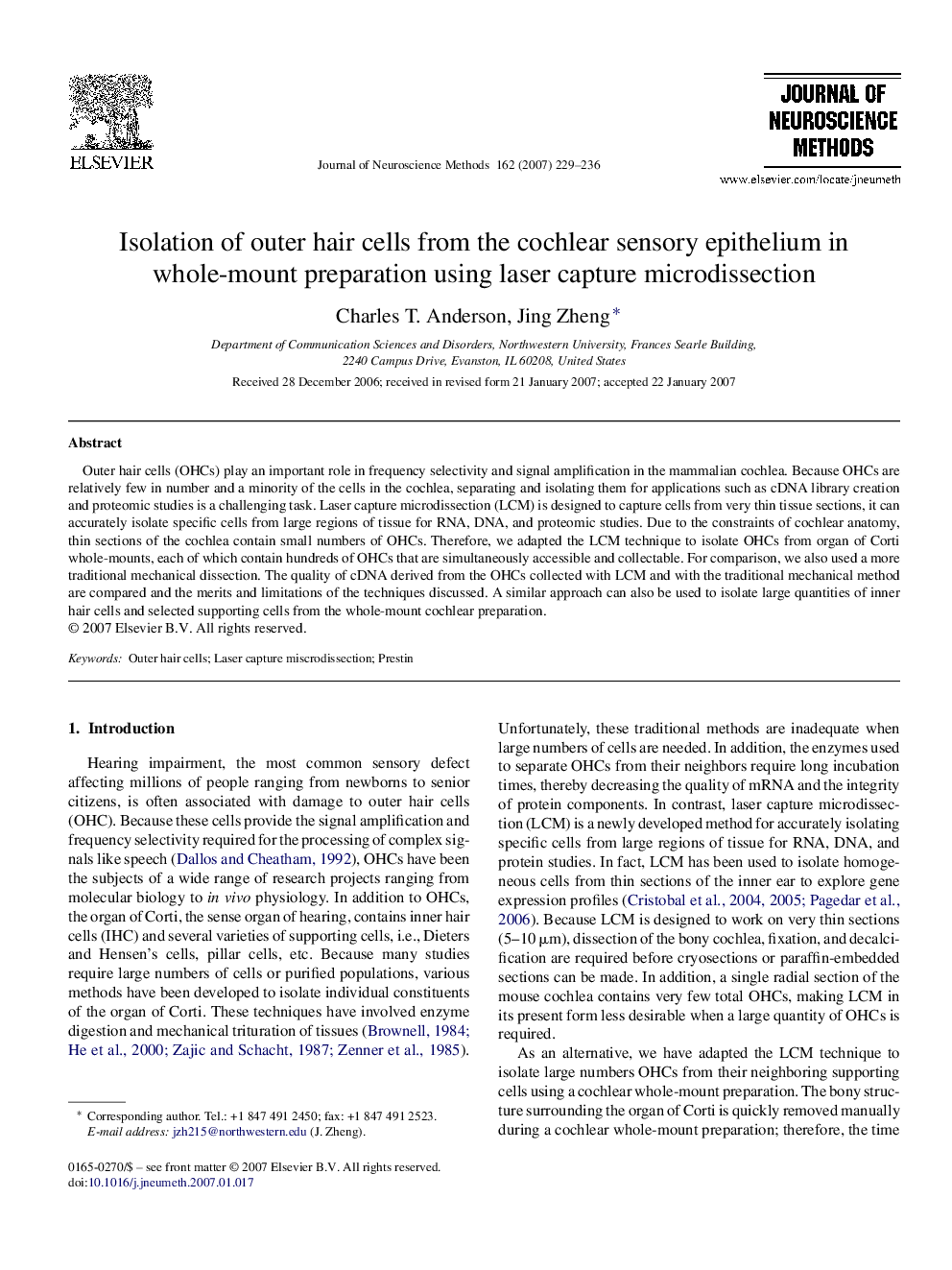| Article ID | Journal | Published Year | Pages | File Type |
|---|---|---|---|---|
| 6270482 | Journal of Neuroscience Methods | 2007 | 8 Pages |
Abstract
Outer hair cells (OHCs) play an important role in frequency selectivity and signal amplification in the mammalian cochlea. Because OHCs are relatively few in number and a minority of the cells in the cochlea, separating and isolating them for applications such as cDNA library creation and proteomic studies is a challenging task. Laser capture microdissection (LCM) is designed to capture cells from very thin tissue sections, it can accurately isolate specific cells from large regions of tissue for RNA, DNA, and proteomic studies. Due to the constraints of cochlear anatomy, thin sections of the cochlea contain small numbers of OHCs. Therefore, we adapted the LCM technique to isolate OHCs from organ of Corti whole-mounts, each of which contain hundreds of OHCs that are simultaneously accessible and collectable. For comparison, we also used a more traditional mechanical dissection. The quality of cDNA derived from the OHCs collected with LCM and with the traditional mechanical method are compared and the merits and limitations of the techniques discussed. A similar approach can also be used to isolate large quantities of inner hair cells and selected supporting cells from the whole-mount cochlear preparation.
Keywords
Related Topics
Life Sciences
Neuroscience
Neuroscience (General)
Authors
Charles T. Anderson, Jing Zheng,
